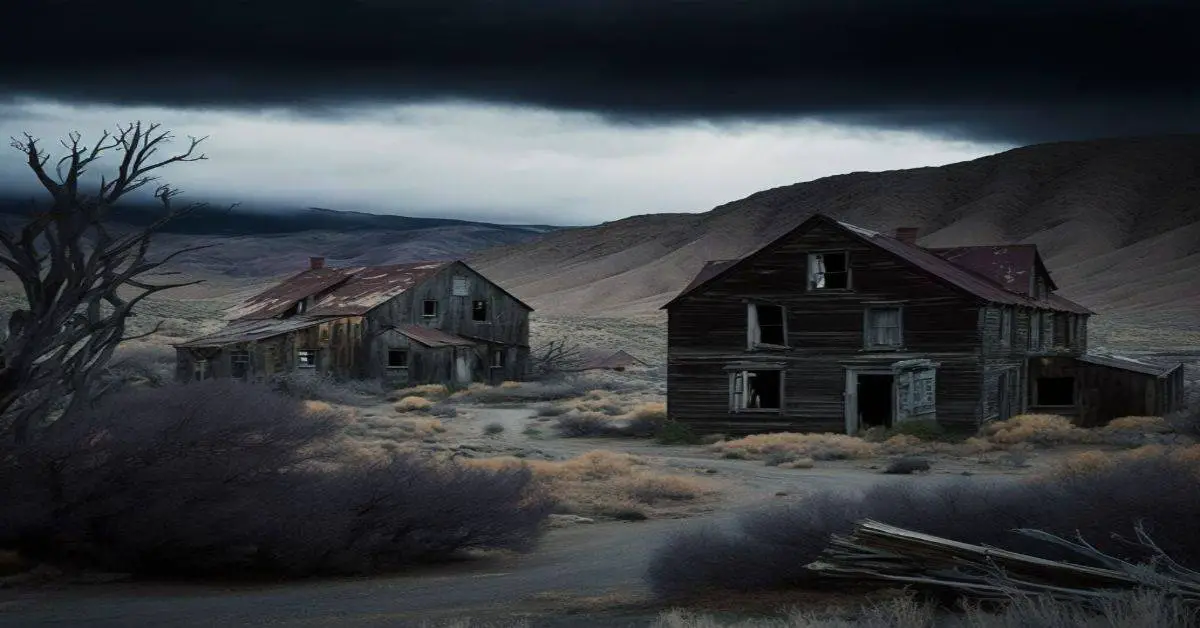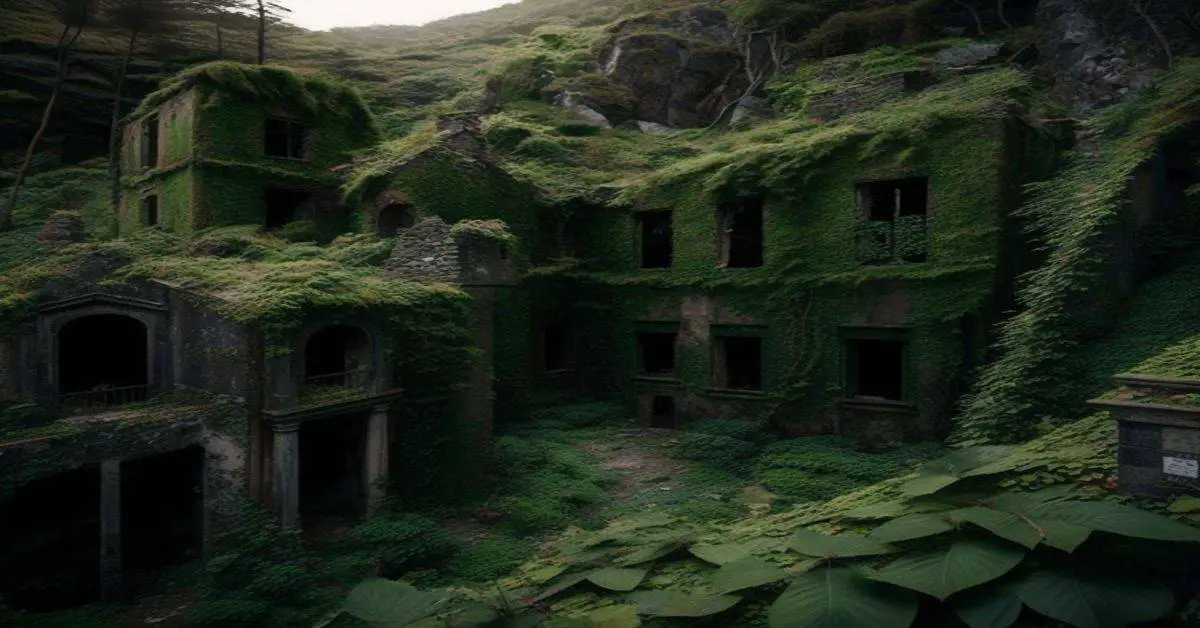Perched in the heart of Humboldt County, Nevada, lies a hidden gem of a ghost town known as Paradise Valley. The town’s history dates back to the early 1800s when Paiutes, Shoshones, and Bannocks inhabited it.
However, the town’s peaceful existence was disrupted by frequent Indian attacks on settlers, prompting the construction of two forts in the late 1800s to protect the town’s inhabitants. Despite its violent past, Paradise Valley transformed into a thriving agricultural community after mining operations ceased, leaving behind a few buildings that still stand as a reminder of its history.
Today, Paradise Valley is a unique destination for history buffs and travelers looking to explore the remnants of a bygone era. The town’s rich history and diversity of inhabitants make it a fascinating place to visit, and the well-preserved buildings offer a glimpse into the past.
Whether you’re interested in history, architecture, or simply seeking an off-the-beaten-path destination, Paradise Valley is worth a visit. In this article, we will delve into the town’s history and inhabitants, explore its attractions and sightseeing opportunities, and acknowledge those who have contributed to the preservation of this historic gem.
Key Takeaways
- Paradise Valley has a rich history dating back to the early 1800s, which includes the town being inhabited by Paiutes, Shoshones, and Bannocks and disrupted by frequent Indian attacks on settlers.
- After mining operations ceased, Paradise Valley became a thriving agricultural community, becoming a hub of activity with bustling markets and a thriving economy.
- The town’s well-preserved buildings offer a glimpse into the past and its contribution to the agricultural industry in Nevada is remembered, making it a must-visit for history buffs and photography enthusiasts.
- Visitors can explore the ruins of the old fortifications and learn about the lives of early settlers, with Henry Chenoweth, David A. Wright, and S. Martin Shelton contributing to preserving the town’s history.
History and Inhabitants
Paiutes, Shoshones, and Bannocks initially inhabited Paradise Valley, and Indian attacks on settlers persisted for several years until two forts were constructed for protection. These conflicts came to a halt in 1869, and the town transitioned from being a mining camp to a productive agricultural community.
The town’s agricultural industry flourished, becoming a vital source of food and supplies for the surrounding areas. Despite the conflicts, Paradise Valley established itself as a peaceful and productive farming community.
The town’s location provided an ideal climate for farming, making it possible for residents to cultivate crops throughout the year. As the town grew, it became a hub of activity, with bustling markets and a thriving economy.
Today, Paradise Valley is remembered for its rich history and its contribution to the agricultural industry in Nevada.
Attractions and Sightseeing
Remaining buildings in the area offer a glimpse into the town’s past, but what other sights and attractions can visitors expect to see in this former agricultural community?
Exploring the ruins of the old fortifications is a must-see for history enthusiasts. Visitors can take a stroll through the remains of the fortifications, which were built to protect settlers from Indian attacks. The ruins of the old forts offer a glimpse into the town’s turbulent past, and visitors can also learn about the lives of the early settlers who lived in the area.
Apart from exploring the ruins, Paradise Valley also offers excellent photography opportunities. Visitors can capture the stunning landscape of the area, surrounded by mountains and hills. The town’s remaining buildings, including an old schoolhouse and a few houses, are great subjects for photography enthusiasts.
Whether visitors are interested in history or photography, Paradise Valley is worth a visit.
Credits and Acknowledgements
The credits and acknowledgements for the information and pictures about Paradise Valley, a former agricultural community in Humboldt County, Nevada, are attributed to Henry Chenoweth, David A. Wright, and S. Martin Shelton.
Henry Chenoweth submitted the information while David A. Wright and S. Martin Shelton provided the pictures. The information and pictures created a comprehensive guide to Paradise Valley, a ghost town with few buildings standing.
Henry Chenoweth is not only the contributor of the information but also a researcher and historian who studies the history of Nevada. David A. Wright is a professional photographer specializing in capturing the beauty of abandoned buildings and ghost towns. S. Martin Shelton is also a photographer who enjoys photographing abandoned buildings and ghost towns.
The contributions of these individuals have helped to preserve the history of Paradise Valley and to provide a glimpse into what life was like in this former agricultural community.
Frequently Asked Questions
What caused the decline of Paradise Valley as an agricultural town?
The decline of Paradise Valley as an agricultural town was due to a combination of factors, including drought and economic downturn. The town’s reliance on agriculture made it vulnerable to these challenges, leading to decreased productivity and eventual abandonment.
Are there any legends or myths associated with the town or its history?
There is no mention of ghost stories or supernatural sightings associated with Paradise Valley’s history. The town’s past was characterized by Indian attacks, two forts built for protection, and a transition from a mining camp to a productive agricultural community.
What is the current population of Paradise Valley?
Ah, the elusive population of Paradise Valley – a ghost town with no ghosts. Population data is scarce, but demographics analysis suggests it’s probably zero. After all, who wants to live in a place with more buildings than people?
Is there any ongoing preservation or restoration work being done in the town?
Historic preservation efforts in Paradise Valley are ongoing, with community involvement playing a key role. Although the town is no longer inhabited, efforts are being made to preserve its remaining buildings and ensure its history is not forgotten.
Are there any nearby towns or attractions worth visiting in conjunction with Paradise Valley?
Embark on a road trip to Winnemucca, located 30 miles from Paradise Valley, for a variety of attractions such as the Humboldt Museum and Winnemucca Lake. Accommodation options include Winnemucca hotels and RV parks.


